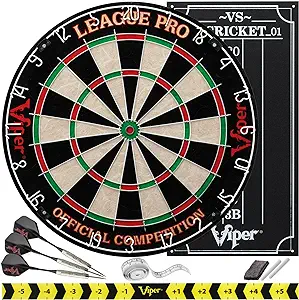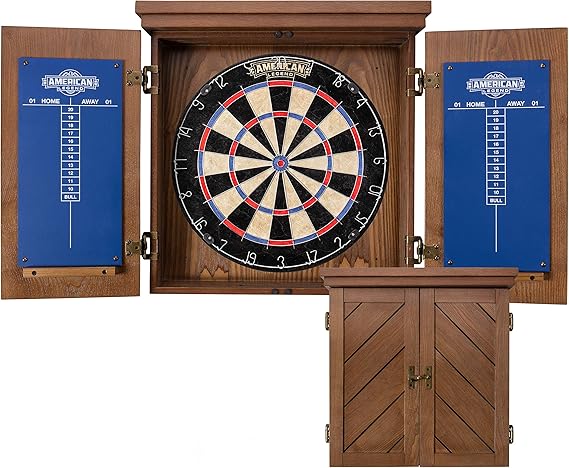Getting a dart on board and hitting the bullseye isn’t just about luck—it’s a skill that requires precision, practice, and a deep understanding of technique. Whether you’re new to the game or looking to refine your skills, mastering the art of darts can bring immense satisfaction, whether you’re at the pub with friends or in a competitive setting. In this guide, we’ll cover everything you need to know to get that dart on board with accuracy and consistency.
Perfecting Your Stance for a Steady Dart on Board
A successful dart on board starts with a stable stance. The way you position your body can significantly affect your throw:
- Feet Placement: Position your lead foot firmly on the ground, pointing directly at the dartboard. Your back foot should provide support and balance, slightly behind the lead foot.
- Body Angle: Slightly angle your body toward the dartboard. Keep your shoulders square, distributing your weight evenly, with a little more pressure on your front foot.
- Find Your Comfort Zone: While these tips provide a general guideline, finding a stance that feels comfortable is crucial for consistency when getting that dart on board.
Grip: Hold it Right
How you hold the dart can make all the difference in your ability to consistently get the dart on board:
- Three-Finger Grip: Use your thumb, index, and middle finger to hold the dart. This grip provides a good balance between control and power.
- Relaxed Grip: Avoid gripping the dart too tightly. A loose, relaxed grip allows for a smoother release, essential for a controlled dart on board.
- Experiment with Placement: Adjust the position of your fingers on the dart to see what feels most natural. Some players grip the dart closer to the tip, while others prefer holding it near the middle.
Aim Like a Pro
Aiming is where skill meets intuition, but with practice, you can develop a reliable method for getting your dart on board:
- Identify Your Dominant Eye: Determine your dominant eye by focusing on a distant object with both eyes open, then closing one at a time. The eye that keeps the object in place is your dominant eye.
- Focus on the Target: Once you’ve lined up your shot, concentrate solely on the spot you want to hit. Whether it’s the bullseye or another part of the board, maintaining focus is key.
- Practice Consistency: Aiming isn’t just about lining up the shot; it’s also about developing muscle memory through repetition, helping you get your dart on board more consistently.
The Throw: Smooth and Controlled
The act of throwing the dart is where all your preparation comes together. Here’s how to make sure your dart lands on board:
- Steady Arm Movement: Your throwing arm should move in a fluid, pendulum-like motion. Minimize any unnecessary movements in your wrist or elbow.
- Follow Through: After releasing the dart, continue the motion of your arm toward the target. This follow-through can enhance your accuracy, helping you consistently get your dart on board.
- Consistent Release: Pay attention to the point in your throw where you release the dart. Consistency in your release point is key to a reliable dart board.
Mental Game: Stay Focused
Success in darts is as much mental as it is physical. Staying focused and mentally sharp can significantly impact your ability to get the dart on board:
- Stay Calm Under Pressure: Even in competitive situations, it’s crucial to stay calm. Practice deep breathing techniques to manage your nerves.
- Visualization: Before each throw, visualize the dart hitting the target. Positive visualization can align your body with your intended target.
- Establish a Routine: Develop a pre-throw routine that helps you get into the right mindset. Whether it’s adjusting your grip or taking a deep breath, a consistent routine can improve your focus and consistency.
Practice Drills: Enhance Your Dart on Board Skills
Regular practice is essential to improving your dart on board skills. Here are some drills to help you sharpen your accuracy:
- Around the Clock: Aim for every number on the board in sequence. This drill helps you practice hitting different areas of the dartboard.
- Bullseye Practice: Spend time focusing solely on hitting the bullseye. Start with the outer bull and work your way to the center, improving your precision.
- Scoring Games: Play a game where you aim to reach a target score, such as 301 or 501, as quickly as possible. This drill is great for practicing accuracy under pressure.
Believe it or not, the darts you use can make a big difference. Here’s what to consider:
- Weight: Darts come in various weights, typically between 16g and 26g. Experiment with different weights to find what feels best.
- Flight Shape: Flights come in different shapes and sizes, affecting the dart’s speed and stability. Larger flights offer more stability, while smaller ones are faster.
- Barrel Texture: The texture of the dart’s barrel affects your grip. Some prefer smooth barrels, while others like a rougher texture for better control.
Final Thoughts
Mastering darts isn’t about getting lucky with a few good throws; it’s about understanding the mechanics, honing your technique, and staying mentally sharp. With the right stance, grip, aim, and mental focus, you’ll see significant improvements in your game. So, grab your darts, head to the board, and start practicing—before you know it, you’ll be hitting that bullseye more often than not!
Remember, whether you’re playing for fun or competition, the journey to mastering darts is all part of the fun. Keep practicing, stay focused, and most importantly, enjoy the game!





